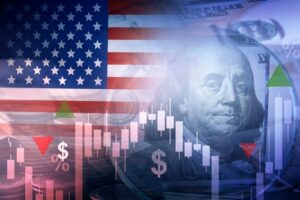The COVID-19 pandemic hit the hotel industry especially hard. With travel restrictions and stay-at-home orders implemented across major U.S. cities, room occupancy rates plummeted late this past March as tourism and travel effectively ended.
Hotels can be a bellwether for the commercial real estate market as a whole as they are often the first asset class to see a slowdown. The coronavirus, however, was an unprecedented event for the industry. STR’s Jan Freitag spoke with Scotsman Guide in late March as the outbreak was gaining ground.
How devastating has the pandemic been for the hotel industry?
This is going to get worse before it gets better. We expect double-digit net revenue declines worse than minus-15% for the foreseeable weeks. This is a direct result of [travel restrictions], conventions being canceled and Americans practicing social distancing.
Do you expect a number of bankruptcies in the hotel industry?
We fully expect a large number of U.S. hotels to close for a period of time. It is too early to tell how long that period lasts. But with almost zero demand, it is not surprising that the owners have taken the unfortunate step of closing down the properties, furloughing most of the staff and leaving a skeletal staff in place for once the occupancy recovers.
As far as the bankruptcies for hotels, it is way too way too early to tell how bank and lending institutions will react to property owners not being able to make their debt payment. In 2009, the banks knew that the industry would recover and eventually they would be able to make debt service again. They were not interested in taking over the properties and so they just held their nose, basically looked the other way and said, yes, we understand that one day you will be able to pay us again.
We fully expect a large number of U.S. hotels to close for a period of time. It is too early to tell how long that period lasts.
Hotel revenues were already in decline before this happened, right?
The 2020 STR RevPAR (revenue per available room) forecast as released on Jan. 25 projected 4% RevPAR growth. That forecast was based on GDP (gross domestic product) growth of 1.7%. As the U.S hotel industry is already in a recession, that forecast is, of course, at risk, and we are currently revising the forecast for 2020 and 2021.
What does a typical hotel cycle look like?
The hotel industry is a cyclical industry and its fortunes are clearly tied to the general economic condition. Specifically, room demand on a quarterly basis and GDP growth on a quarterly basis are almost linked one to one. So, as the U.S. economy grew for an unprecedented 10 years, so did U.S. hotel RevPAR. We recorded the longest RevPAR expansion ever starting in 2010.
Is any particular category of hotel more at risk than others?
Looking at the data through March 14, all hotel class types and location types will be hit equally. We have seen a more rapid deceleration in RevPAR in the properties that were reliant on groups and meetings. So, the larger properties [are at greater risk].
Do you see anything that might provide a glimmer of hope for the industry?
Industry is cyclical. This too shall pass. There will be an upturn. American consumers have been clear that the inalienable liberal right for life, liberty and the pursuit of travel should not be infringed. People will always travel. Always have, always will. When that will happen, it’s too early to tell, but it’s not too early to say that there will be a recovery in the U.S. hotel industry.
Author
-

Victor Whitman is a contributing writer for Scotsman Guide and a former editor of the publication’s commercial magazine.
View all posts






